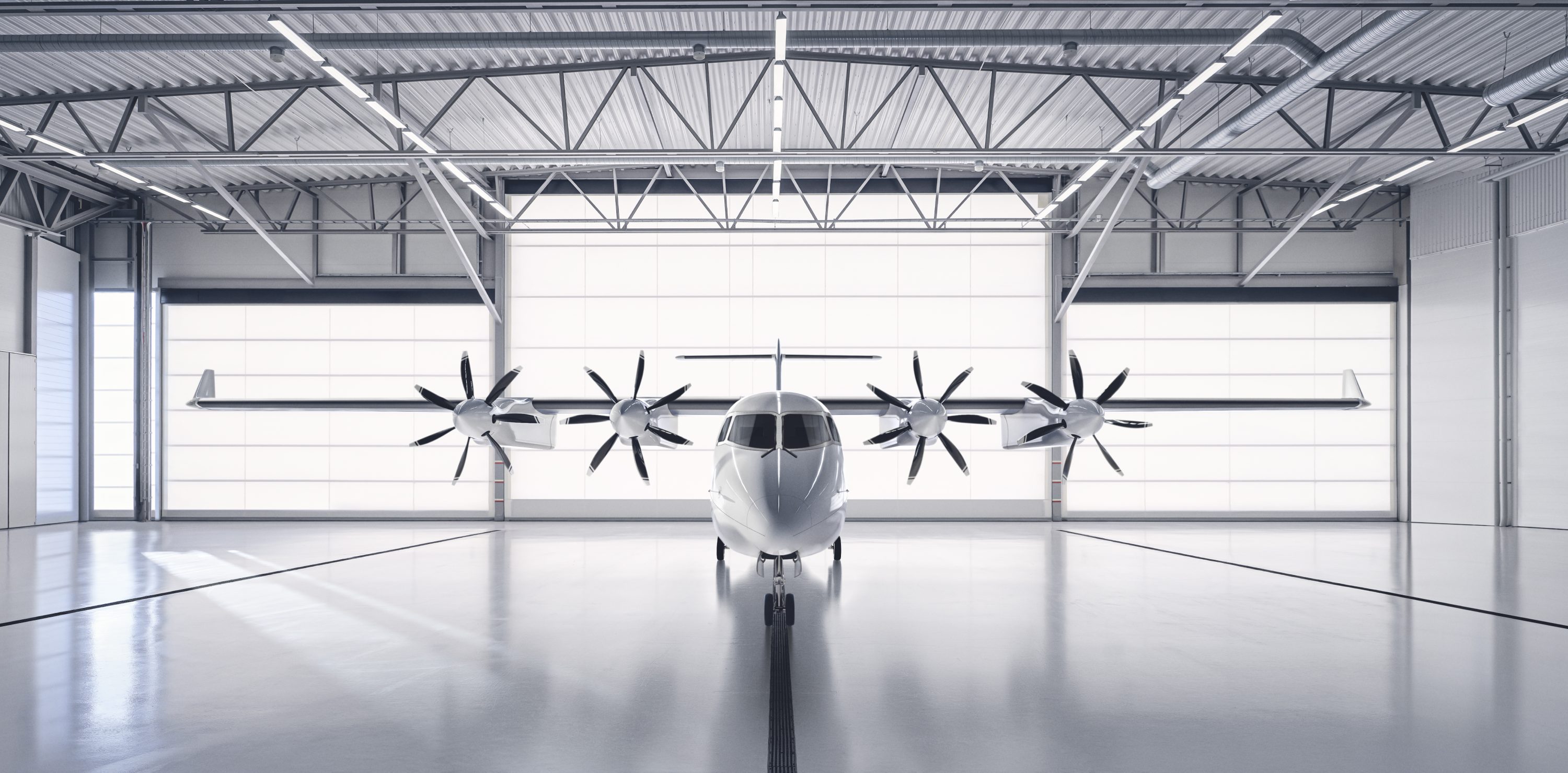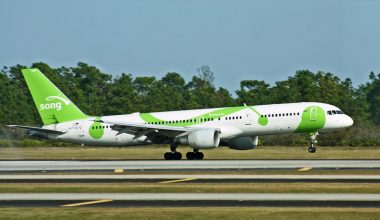On Tuesday, July 13, United Airlines and the regional carrier of the US, Mesa Air Group, announced to purchase up to 100 electric planes (ES-19) each from Heart Aerospace.
United Airlines Venture (UAV), the venture subsidiary of United Airlines, will invest in the Swedish aerospace, in partnership with Mesa Air Group, although the agreement doesn’t imply firm order. Heart Aerospace is a Swedish company for making electric regional aircraft. It has got the biggest purchase order to date. Mesa Airlines is a key strategic partner of United Airlines to bring electric planes into the commercial air market. They both have consented to add 100 ES- 19 Aircraft to their fleets. The colossal investment marks the auspicious phase of aviation.
Read More: China’s First Electric Aircraft

As a part of an agreement made Tuesday, Bill Gates-founded Breakthrough Energy Ventures also announced the investment of an undisclosed amount in Heart Aerospace. It is an alternative energy-focused, VC Fund.
Also Read: Airplane brands and models
United Airlines have prioritized the aircraft to be made safe, which meets United’s business and operating standards, before finalizing the sale. Mesa Air Group had imposed similar terms and conditions. 2026 is the debut year for electric planes, as targeted by Heart Aerospace, albeit it’s still uncertain whether the target can be met, given tough certification conditions for new aircraft.

ES-19
Heart’s 19 seater ES-19, having a potential range of 250 miles, is small-sized yet can curb the prospective way of using a plane, even more than a larger airplane. The ES-19 will be feasible for commencing short-distance flights. As fuel savings result from electric aircraft, the short-haul regional routes can re-proceed with cost-effective airfares.
The ES-19’s price hasn’t been disclosed yet, as the development phase can contrast the pricing.

United Airlines seeks to operate ES-19 in a 100 route network, as long as the final product matches to airline’s specifications. The potential destinations of ES-19 are Modesto, Indiana, California, Purdue University Airport in Lafayette, etc.
The deal of conditional purchase extends UA’s push to cut the emissions by 2050s, reducing the effect on climate change thereby. This agreement of 200 electric planes is the latest technology bet in aviation to minimize emissions.

Given the competitive move by UA, the rival airline American Airlines and Virgin Atlantic have also unveiled about investing in EVToL startups; they have recently invested in UK-based Vertical Aerospace. There’s yet to witness which product will prove to be realistic in the market.
Funding by United and Mesa on ES-19
The two partners, United Airlines and Mesa Air Group, have invested in a $35 million Series A funding round for Heart and demonstrated their confidence in the design of Heart. This deal is the newest in aviation concepts which can be a significant step towards commercial electric flights to decrease carbon emission.

UA and Mesa have also already issued a statement on plans to invest in Palo Alto, a company having its base in Calif, that concerns the development of electric flying taxis.
Along with this latest deal, United Airlines had made a similar announcement before. Skewing towards the alternative fuel-based company, UA had invested in several startup companies of the aviation industry. These are high-profile investments. Aiming to bring electric planes earlier than any other US airline, UA seeks to get the first-mover advantage along with low carbon emission footprints in the environment.
In June, United said it had made investments in Boom Supersonic (it designs affordable supersonic jets using sustainable aviation fuel) and buy 15 of those aircraft. Similarly, in February, the airline partnered with vertical take-off and landing startup Archer Aviation, the EVToL company, as per its announcement.
Ongoing Scenario of ES-19
The airline industry is bracing up, making preliminary purchase orders to operate different electrified flights. These are, however, the conditional plans, without confirmation that such models will be built and operated in domestic and international flight routes.
Before this, short-haul commercial airlines have installed battery technologies. Many startups are pushing their efforts towards constructing viable aircraft. As air travel is slowly recovering, it is an urgent issue to eliminate carbon emissions. New planes will revitalize short air trips.

As much as airlines have been hobbled, lost billions of revenues, and still struggling to make break-even, the pandemic period has also been an opportunity to utilize stimulus funds to cruise air transport to a carbon-neutral state. Many large companies are also combating their emission goals while trying to scale back the business traveling.
Mesa CEO Jonathan Ornstein emphasized electric aircraft to operate at less cost than Jet fuel-powered aircraft. He also said that it could breathe new life into small yet expensive-to-fly markets. Mesa once provided its air service to the small cities of Farmington, NM, by using a 19 seater turboprop. However, as they have been discontinued in practice, there are still many small communities without air transport services. Mesa was the largest operator of 19 seater planes at some point, which has dropped to an unprofitable margin now. The 19 seater was once a mainstay for regional carriers. Regional air travel has reduced slowly in the US since the 1990s.
Most regional aircraft operate 50-seater aircraft, which is even more on the capacity for markets with less air travel demand. In United Airline’s current fleet, the smallest plane has a seating capacity of 50 passengers.
The newest deal of United and Mesa may revive 19 seater planes. Heart’s ES-19 can probably be apt into a niche in small markets.
The Heart was established in 2018 as a result of the Norwegian government’s ratification to use electric aircraft for short-distance travel by 2040. Heart Aerospace has challenges to fulfill many steps along its way to the proposed date of delivery. Assembling, testing, and certifying the prototype of the whole aircraft requires a load of time.

The electric aircraft will use the same batteries types as electric cars, so an electric propulsion system is the only novel thing that has already been demonstrated. Though complicated to build, the aircraft depends heavily on pertinent technologies.
Heart’s electric aircraft is larger than other similar aircraft, which accounts for one unique selling point. General logic is that as long-haul airplanes require more energy than that provided by current batteries, the technological advancement in batteries can lead to electric planes flying farther. It has the potentiality of decarbonizing air travel in the regional sector.
About United Airlines
United Airlines is an American airline operating a wide range of domestic and international flights spanning big and small cities across the US and all six continents. It has its headquarter at Willis Tower in Chicago. It is the third-largest airline, as per the fleet size and number of flight routes globally. On April 6, 1926, IT was founded and commenced its first flight operation on March 28, 1931.
Environmental Initiatives of United Airlines
United Airlines have been involved in an operational fuel efficiency initiative, as jet fuel accounts for over 98% of United Airline’s CFC emissions. Its environmental strategy regards investments in sustainable, alternative fuels. United Airlines Venture is putting up a portfolio of companies that coordinate innovative sustainability notions to reach United’s net-zero CFC emission goals.
On August 23, 2011, United Continental Holdings initiated a paperless flight deck with benefits like cutting off paper use, print, and fuel consumption.
On November 7, 2011, the first microbial-derived biofuel-powered flight was conducted by United for the first time in the world. The commercial fight served the Houston-Chicago O’Hare route.
On January 15, 2013, United agreed to use Aviation Partner Boeing (APB)’s Split Scimitar Winglet by replacing blended Winglets on Boeing 737.
On March 11, 2016, United Airlines was the first airline to operate commercial aviation flights using Alt air fuels continuously. In 2016, United donated the airline’s first and business class amenity kits by partnering with Clean the World.
Mesa Airlines is another US-based regional airline. Mesa Air group is a commercial aviation holding company, which has Mesa airline as its subsidiary. It operated flights throughout the US, Columbia, Mexico, The Bahamas, Cuba, Canada, etc. Mesa conducts flights for United Airlines under United Express and also for American Airlines under American Eagle brands.
Impacts of Aviation on Environment
For the local and global environment, growth in air demand is a trouble that conflicts with sustainable development objectives. As aviation fundamentally brings the promise of the contemporary image, sustainable development policies are challenging to be delivered. The heat, noise, gases emitted from aircraft add to environmental impacts responsible for climate change and global dimming. Now that there’s been continual growth in air travel gradually, the Co2 emissions increase simultaneously. Suppose aviation growth speeds up at this pace. In that case, more greenhouse gasses will interact with the environment, more climate change-associated problems, and more government financial subsidies will be required to reduce the pollution.
But, Electric airplanes eliminate flight emissions and can transform the aviation sector. The fuel costs can be deducted by 90%, the maintenance cost by 50%, and noise by 70%. It is the cleanest method to run an aircraft. With its battery-powered electric propulsion, it will have minimal environmental effects. It can combat noise pollution.
Although electric aircraft are a feasible alternative to short commercial flights, recent innovations can provide the scale of transformation to break down the barriers.






